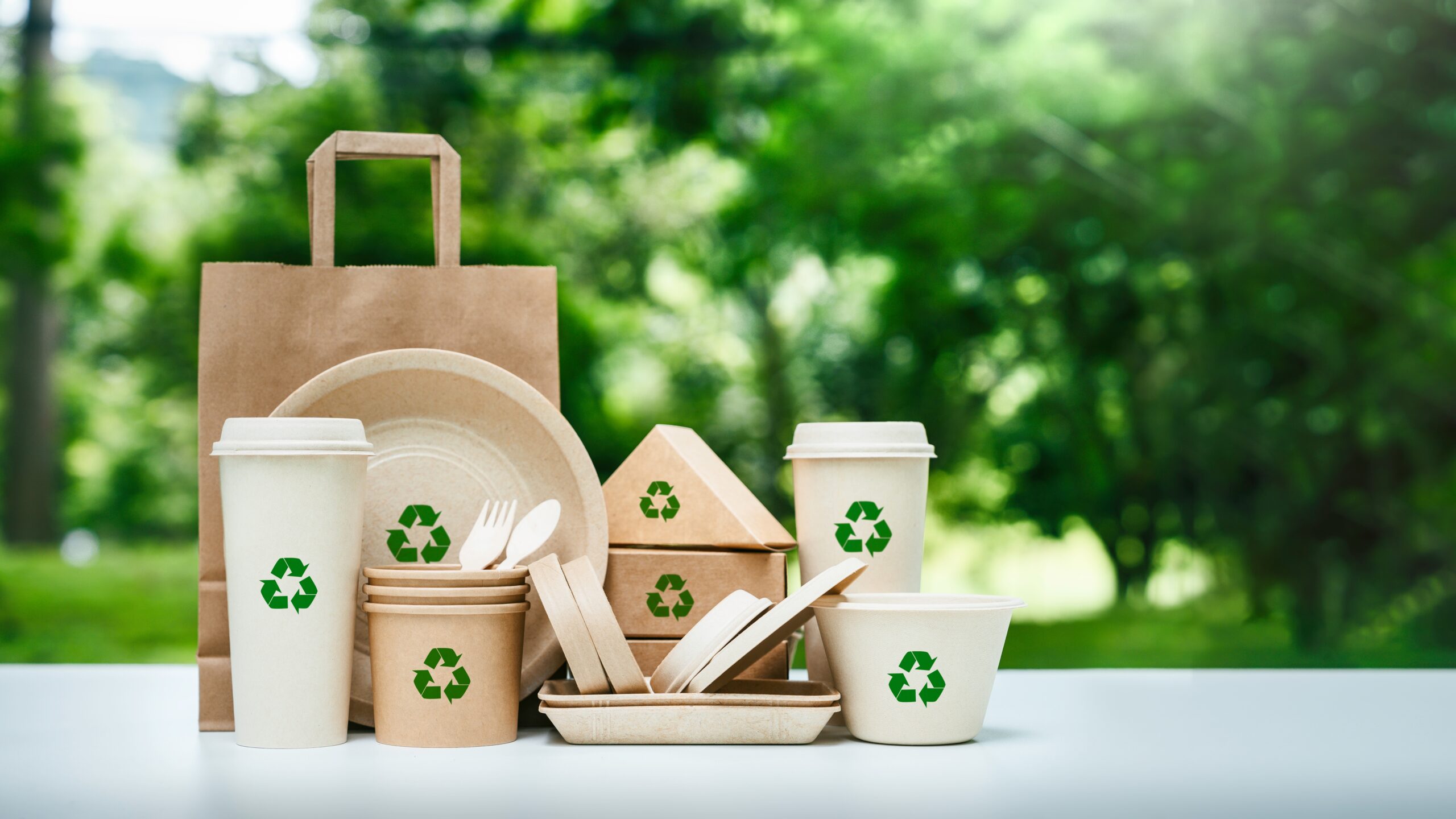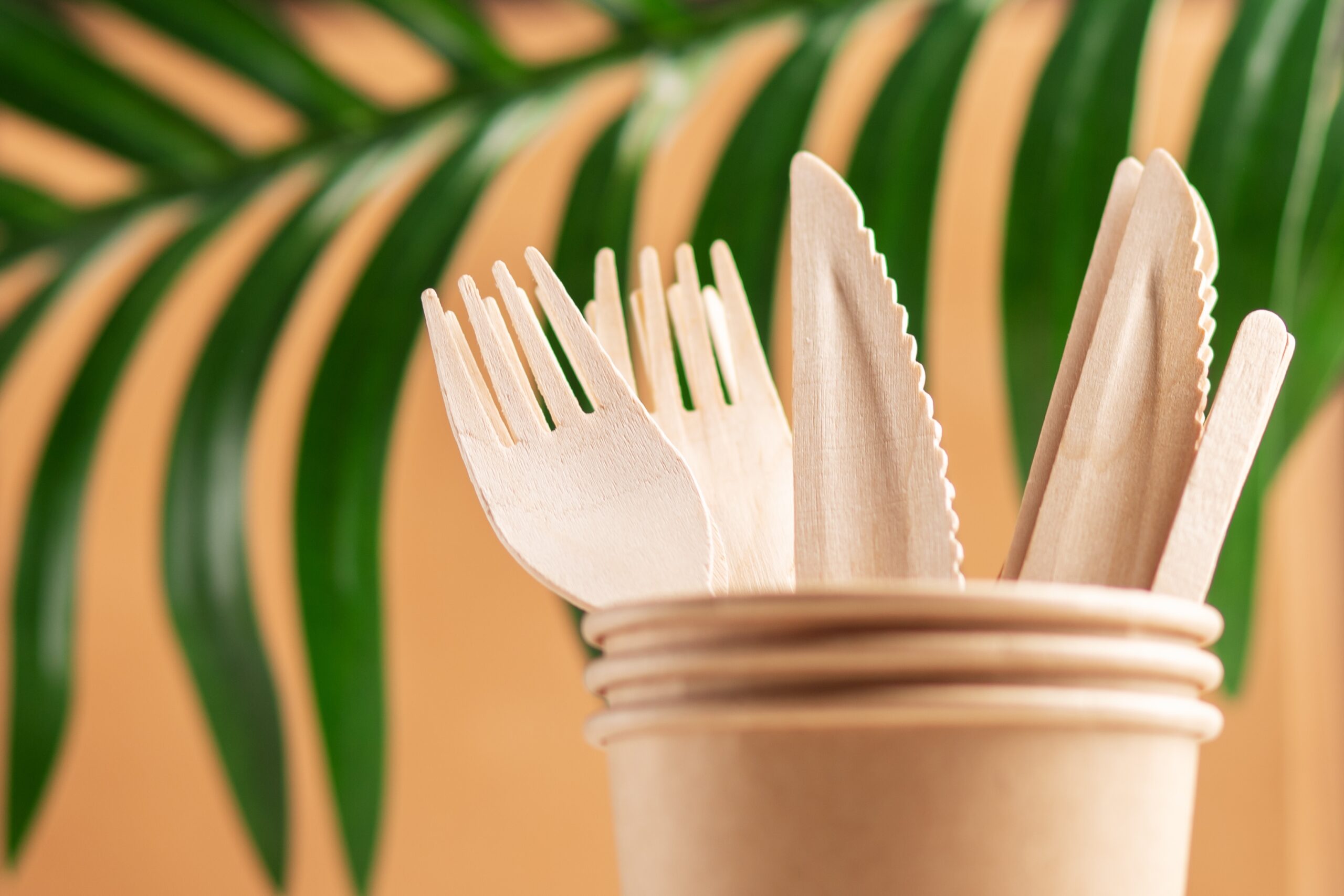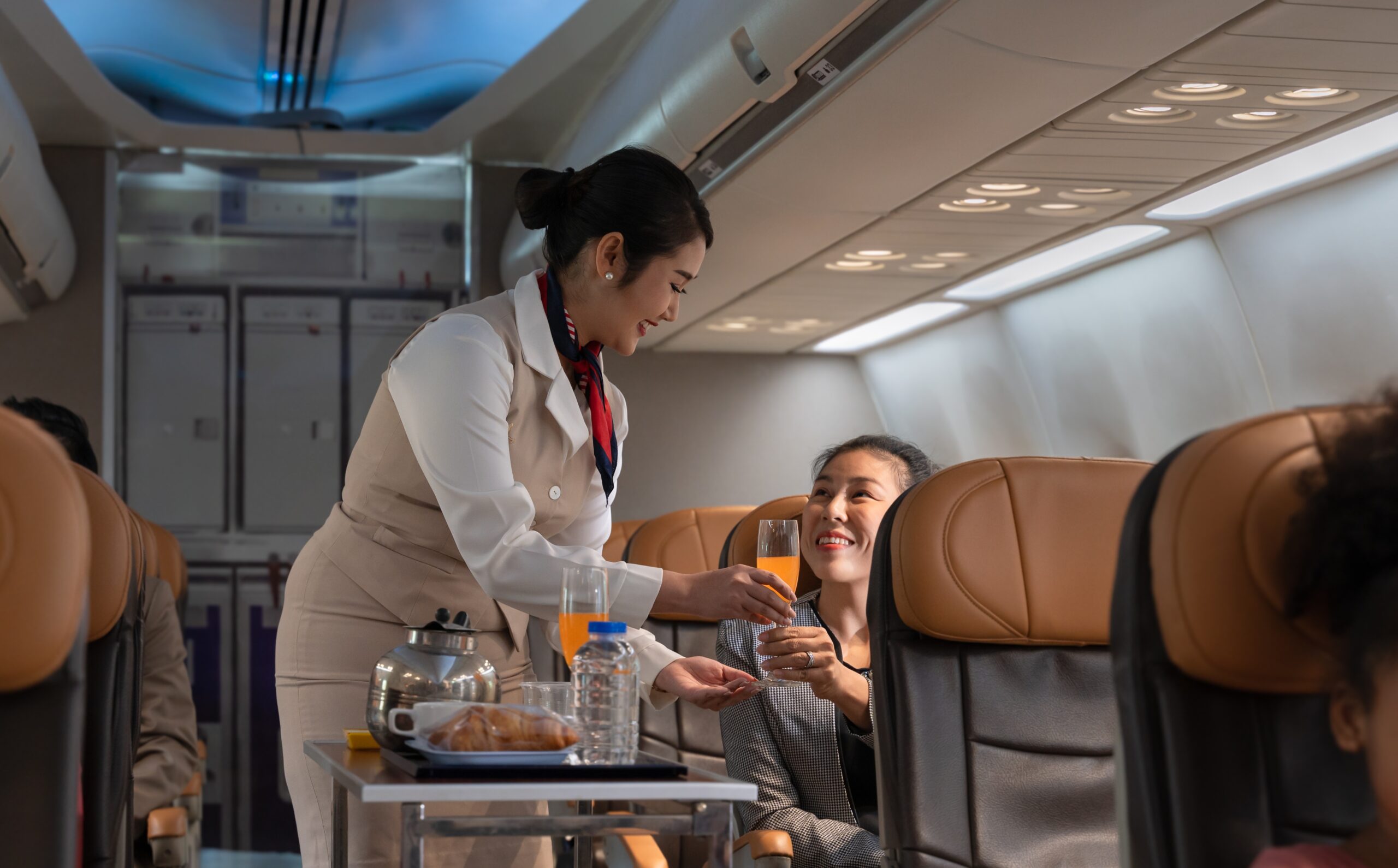Biodegradable vs Compostable Supplies: What Airlines Need to Know
As demand for sustainable travel products grows, passengers are taking a closer look at the items they’re given as they travel, from cutlery kits and drinking cups to dishware and even sanitizing wipes. What used to be overlooked is now part of how travelers assess quality and care. However, with terms like “biodegradable” and “compostable” often used interchangeably, the details can get murky fast.
For airlines, cruise lines, and rail operators, understanding the distinction is more than just a semantic issue. It’s about choosing materials that align with available waste systems, passenger expectations, and environmental regulations. A compostable cup that ends up in a landfill offers limited benefit.
At RMT Global Partners, we specialize in helping travel brands navigate these choices. Our eco-friendly products—like bagasse cutlery, Tritan glassware, and sustainable eating utensils—are designed with real-world travel conditions and environmental concerns in mind.
Biodegradable vs. Compostable—What’s the Difference?
“Biodegradable” and “compostable” may sound similar, but they work differently. For travel providers choosing serviceware and supplies, understanding the difference is essential. So, what’s the difference?
A biodegradable product breaks down over time with the help of natural microorganisms. However, this process can take months or even years, especially in landfills where airflow and moisture are limited. Plus, biodegradable doesn’t always mean non-toxic. Some materials can still leave behind microplastics or chemical residue.
Compostable products, on the other hand, are designed to decompose fully and safely in specific conditions, usually within commercial composting systems. These materials (such as bagasse cutlery or plant-based drinking cups) break down into nutrient-rich organic matter when processed correctly.
Why the Differences Matter in Travel Settings
Understanding the differences between compostable, biodegradable, and other similar terms helps operators make smarter, more informed decisions about items like sustainable dishware, sanitizing wipes, and cutlery kits—and what actually supports a lower-impact experience.
A product marked “biodegradable” may still end up in a landfill, where it breaks down slowly—or not at all—due to the lack of oxygen and moisture. Compostable products require specific conditions to decompose properly, yet commercial composting infrastructure is rarely available on board or at terminals. Without clear systems in place, even well-intentioned choices can wind up missing the mark.
For travel providers aiming to reduce their environmental footprint, the distinction isn’t just technical, it’s practical. Relying on suppliers who understand the difference and can verify their materials and certifications is key. From Tritan glassware to bagasse cutlery, the details behind your sustainable eating utensils matter more than the label alone.
What to Look for in Eco-Friendly Travel Products
The right eco-friendly products need to perform under real-world conditions while also aligning with your waste-handling systems. That’s where material choice really counts.
Bagasse products, made from sugarcane fiber, offer a compostable alternative to plastic—sturdy enough for in-flight meals and suitable for industrial composting where available. Tritan glassware, used in many premium cabins, is crystal-clear, reusable, and dishwasher-safe, making it a strong replacement for single-use cups in business or first class.
RMT Global Partners offers a range of sustainable dishware and cutlery kits designed to minimize single-use plastics without disrupting operations. That includes pre-packed kits that streamline distribution and reduce packaging waste. Even small touches—like drinking cups or sanitizing wipes—can be redesigned with low-waste packaging or recyclable components.
The key is matching materials to their likely disposal paths and the cabin environment they serve. Reusable options may work in premium cabins, while compostables make more sense on routes where post-flight sorting is possible. It’s not just about what’s used on board—it’s about what happens to it afterward.
How Airlines & Travel Brands Can Make Smarter Choices
For airlines, rail, and cruise operators, switching to eco-friendly products isn’t just about optics—it’s about choosing items that work well, reflect your brand, and reduce unnecessary waste.
RMT Global Partners works closely with travel brands to build smarter kits—from cutlery kits to amenity pouches—customized for each cabin class and service need. We focus on materials that perform reliably in transit and align with real disposal practices on the ground.
Before making a bulk change, it’s worth asking a few questions: Where will these items end up? Are the materials third-party certified? Can your supplier back up claims with testing and documentation?
Our approach to sustainability is built on long-term partnerships, not one-time swaps. We’re here to help you find solutions that meet both your service standards and environmental goals.
Want to build travel kits that are beautiful, functional and truly sustainable? Looking for eco-friendly products that meet passenger needs and sustainability goals? Contact RMT Global Partners to start your eco-forward product strategy.






